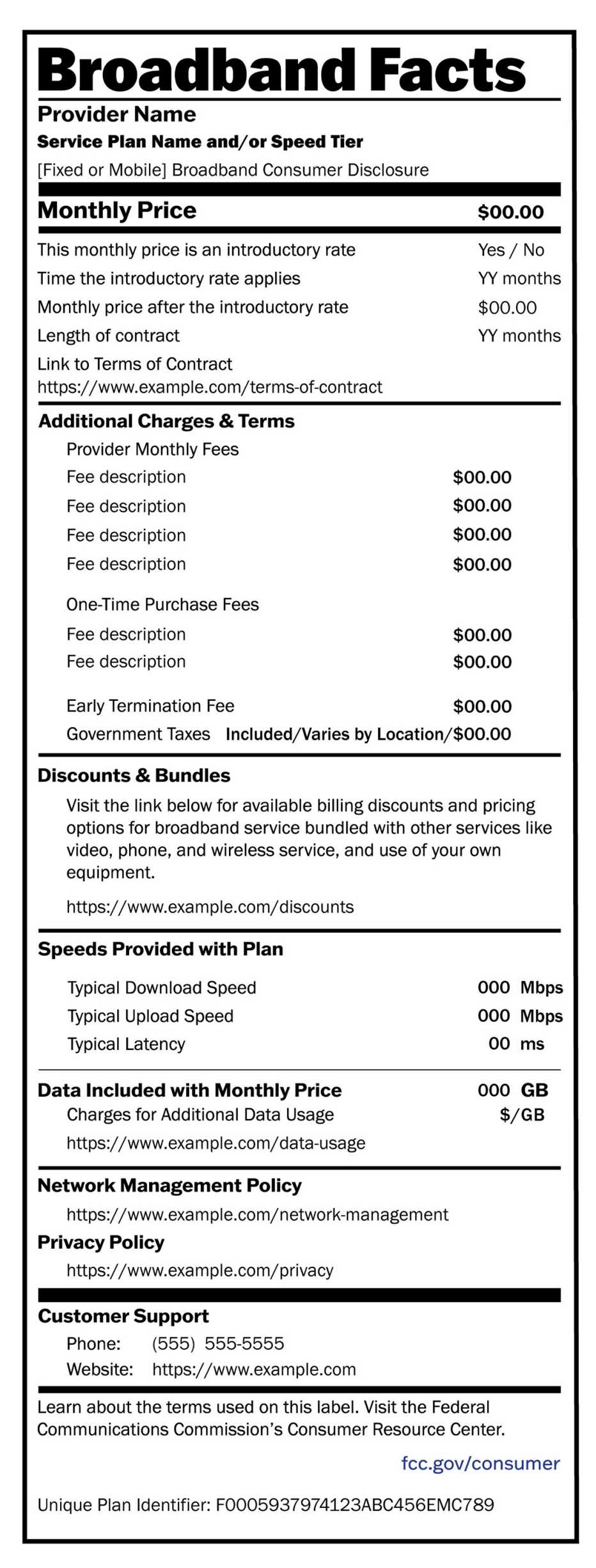AARP Hearing Center


In this story
Familiar format • What to expect • Where to find • Other languages
Most people instantly recognize the nutrition labels on packaging that let you know the calories, cholesterol and fat content in processed foods and beverages.
The Federal Communications Commission (FCC) hopes to bring similar transparency to people shopping for high-speed internet access. The agency now requires internet service providers (ISPs) nationwide to display uniform broadband information inspired by the Food and Drug Administration’s Nutrition Facts labeling.
The goal is to let consumers compare. These rules went into effect April 10 for most ISPs, though providers with fewer than 100,000 subscribers have until Oct. 10. They meet requirements in the Infrastructure Investment and Jobs Act that President Biden signed into law in 2021.
The labels apply to at-home internet and wireless broadband plans. The FCC adopted one label requiring the same information and format for both.
These labels are available for broadband plans aimed at new customers. The FCC is not requiring companies to create labels for plans that current customers use but new customers can’t buy, so trying to compare a plan that you’ve had for a long time with a newer offering may not be easy.
“The visual aspect of it really helps in our opinion, especially for an older person because they’re so accustomed to nutrition labels,” says Dawit Kahsai, AARP’s government affairs director.
AARP was an active participant in the process that resulted in the FCC’s regulations. Its comments were cited more than 40 times.
What to expect from the labels


The government created a template for these broadband labels that providers are required to follow:
Name of company and plan. At the very top, you’ll see the name of the internet provider and the name of the plan, because your ISP likely has more than one plan in your ZIP code. You also will see the type of broadband being offered, either fixed or mobile.
Fixed broadband services are provided to your home or a single location using digital subscriber line (DSL) technology from your phone company, coaxial cable wires from your cable TV provider or fiber-optic cable from any utility. Mobile broadband, which includes products such as internet hot spots, is device based and available throughout a provider’s cellular coverage area, similar to smartphone services.
Monthly pricing. The label must list whether the price shown is an introductory rate. If so, the ISP must spell out the terms: How long does the promotional period last? What is the cost once it lapses? If a contract is required, the company must supply a link to it.
Additional charges and terms. These include any onetime fees when you sign up for a plan as well as possible early termination fees. Keep in mind, you probably won’t see a dollar amount for taxes in the numbers listed. Prices will also differ by location.



































































More From AARP
FCC Outlaws Robocalls Made With Artificial Intelligence
Agency says AI makes rampant scam calls that could deceive votersFCC Orders Mobile Phone Companies to Block Scam Texts
225 billion robotexts sent in 2022, more than spam calls
AARP Guide to Modern Problems and Their Solutions
We tapped top pros to take on today’s most common health, money, home and tech issues
Recommended for You